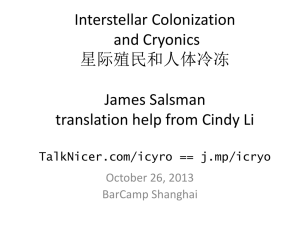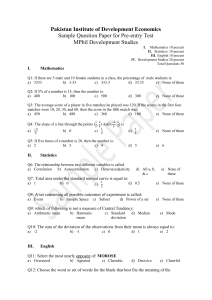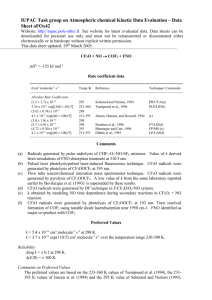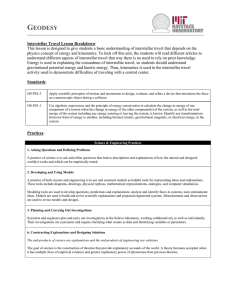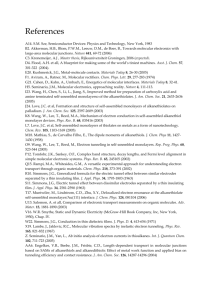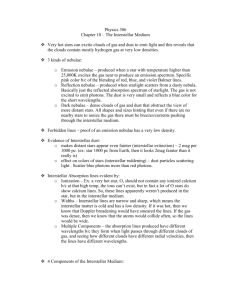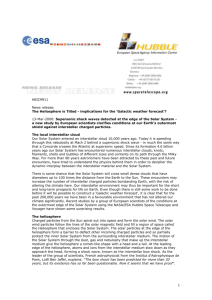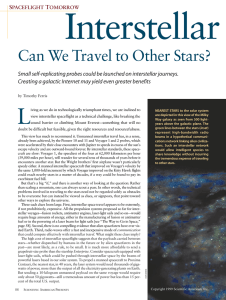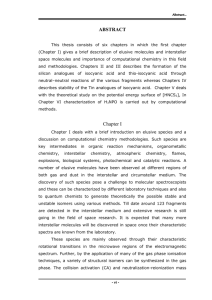kolos_abstract_gamov_conf
advertisement
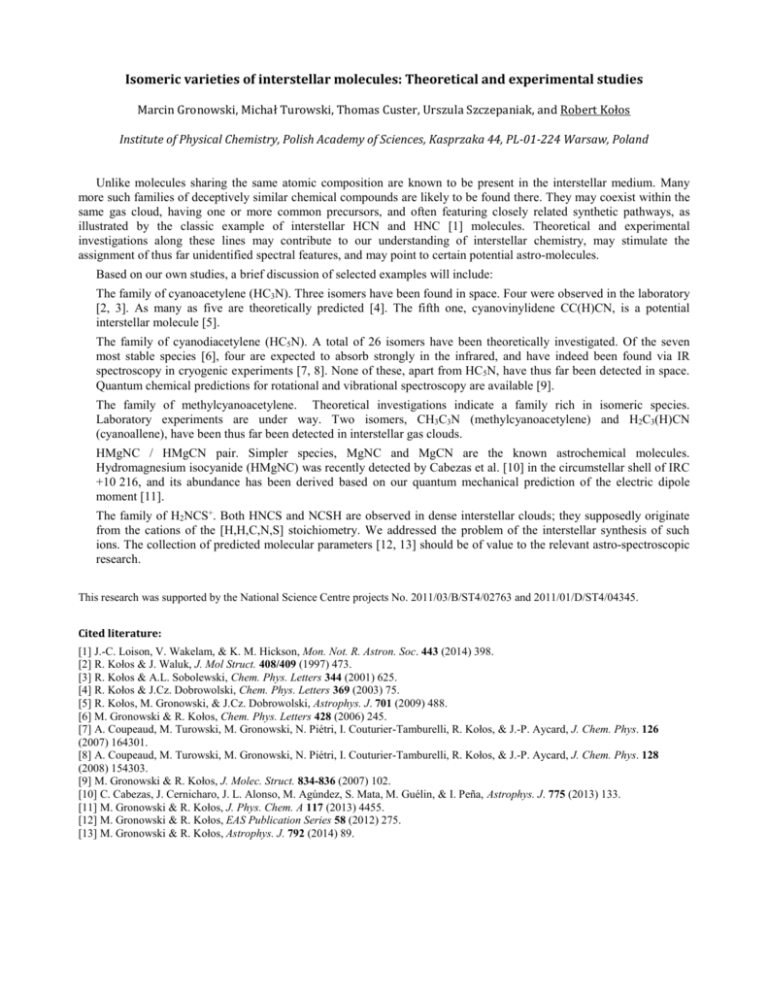
Isomeric varieties of interstellar molecules: Theoretical and experimental studies Marcin Gronowski, Michał Turowski, Thomas Custer, Urszula Szczepaniak, and Robert Kołos Institute of Physical Chemistry, Polish Academy of Sciences, Kasprzaka 44, PL-01-224 Warsaw, Poland Unlike molecules sharing the same atomic composition are known to be present in the interstellar medium. Many more such families of deceptively similar chemical compounds are likely to be found there. They may coexist within the same gas cloud, having one or more common precursors, and often featuring closely related synthetic pathways, as illustrated by the classic example of interstellar HCN and HNC [1] molecules. Theoretical and experimental investigations along these lines may contribute to our understanding of interstellar chemistry, may stimulate the assignment of thus far unidentified spectral features, and may point to certain potential astro-molecules. Based on our own studies, a brief discussion of selected examples will include: The family of cyanoacetylene (HC3N). Three isomers have been found in space. Four were observed in the laboratory [2, 3]. As many as five are theoretically predicted [4]. The fifth one, cyanovinylidene CC(H)CN, is a potential interstellar molecule [5]. The family of cyanodiacetylene (HC5N). A total of 26 isomers have been theoretically investigated. Of the seven most stable species [6], four are expected to absorb strongly in the infrared, and have indeed been found via IR spectroscopy in cryogenic experiments [7, 8]. None of these, apart from HC5N, have thus far been detected in space. Quantum chemical predictions for rotational and vibrational spectroscopy are available [9]. The family of methylcyanoacetylene. Theoretical investigations indicate a family rich in isomeric species. Laboratory experiments are under way. Two isomers, CH3C3N (methylcyanoacetylene) and H2C3(H)CN (cyanoallene), have been thus far been detected in interstellar gas clouds. HMgNC / HMgCN pair. Simpler species, MgNC and MgCN are the known astrochemical molecules. Hydromagnesium isocyanide (HMgNC) was recently detected by Cabezas et al. [10] in the circumstellar shell of IRC +10 216, and its abundance has been derived based on our quantum mechanical prediction of the electric dipole moment [11]. The family of H2NCS+. Both HNCS and NCSH are observed in dense interstellar clouds; they supposedly originate from the cations of the [H,H,C,N,S] stoichiometry. We addressed the problem of the interstellar synthesis of such ions. The collection of predicted molecular parameters [12, 13] should be of value to the relevant astro-spectroscopic research. This research was supported by the National Science Centre projects No. 2011/03/B/ST4/02763 and 2011/01/D/ST4/04345. Cited literature: [1] J.-C. Loison, V. Wakelam, & K. M. Hickson, Mon. Not. R. Astron. Soc. 443 (2014) 398. [2] R. Kołos & J. Waluk, J. Mol Struct. 408/409 (1997) 473. [3] R. Kołos & A.L. Sobolewski, Chem. Phys. Letters 344 (2001) 625. [4] R. Kołos & J.Cz. Dobrowolski, Chem. Phys. Letters 369 (2003) 75. [5] R. Kołos, M. Gronowski, & J.Cz. Dobrowolski, Astrophys. J. 701 (2009) 488. [6] M. Gronowski & R. Kołos, Chem. Phys. Letters 428 (2006) 245. [7] A. Coupeaud, M. Turowski, M. Gronowski, N. Piétri, I. Couturier-Tamburelli, R. Kołos, & J.-P. Aycard, J. Chem. Phys. 126 (2007) 164301. [8] A. Coupeaud, M. Turowski, M. Gronowski, N. Piétri, I. Couturier-Tamburelli, R. Kołos, & J.-P. Aycard, J. Chem. Phys. 128 (2008) 154303. [9] M. Gronowski & R. Kołos, J. Molec. Struct. 834-836 (2007) 102. [10] C. Cabezas, J. Cernicharo, J. L. Alonso, M. Agúndez, S. Mata, M. Guélin, & I. Peña, Astrophys. J. 775 (2013) 133. [11] M. Gronowski & R. Kołos, J. Phys. Chem. A 117 (2013) 4455. [12] M. Gronowski & R. Kołos, EAS Publication Series 58 (2012) 275. [13] M. Gronowski & R. Kołos, Astrophys. J. 792 (2014) 89.


